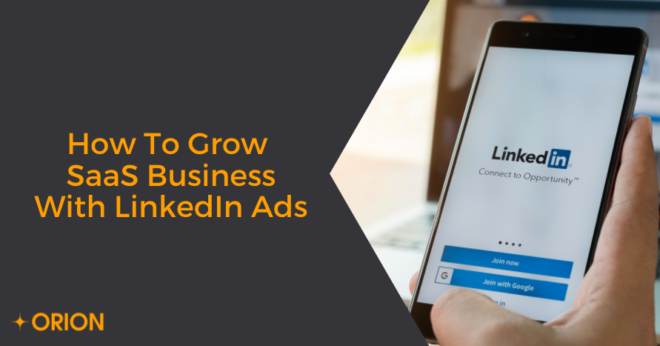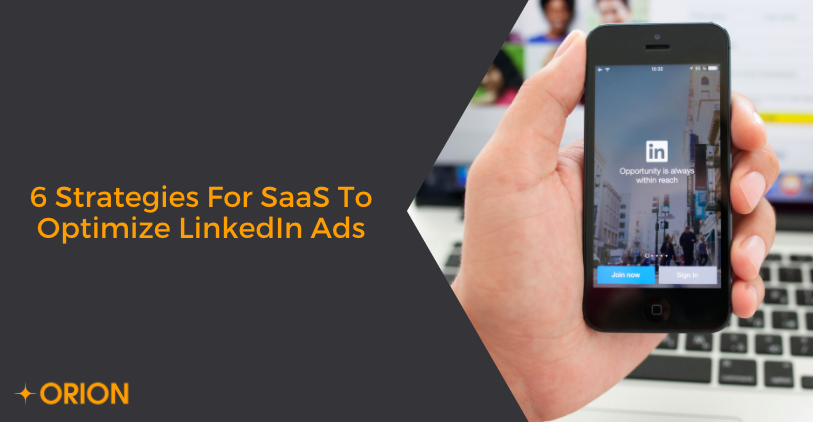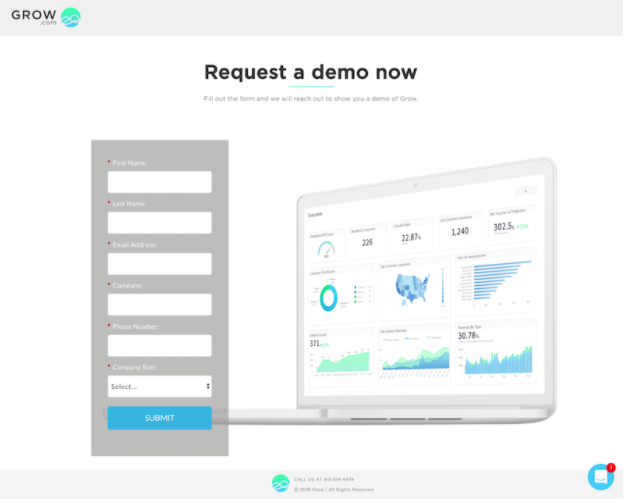This is a guest post written by Manno Notermans, co-founder of Think Orion, the official digital agency partner of SaaStock. Manno is a marketing expert with over a decade of experience working with both agency & client-side to help SaaS businesses scale.
Why should you use LinkedIn ads when other platforms like Twitter or Facebook exist?
In the past, it lacked specific targeting features and quality scores, making marketers waste tons of money to throw up irrelevant ads to a general audience. But things changed, and LinkedIn has stepped up their game to become the best channel to target enterprise and mid-market prospects.
LinkedIn is now the most effective channel for driving leads for SaaS companies, especially with the ability to see your audience’s industries, companies, and job titles.
The three main areas where B2B SaaS companies go wrong with LinkedIn ads are:
- Budgeting: Inadequate budget
- Targeting: Too specific targeting (a single job title)
- Content: Unfit content to the prospect’s mindset
This article will elaborate on these three areas and show you how to run successful LinkedIn ads for your SaaS business while avoiding these mistakes.
What will you learn in this article:
- Budgeting
- Targeting
- Content
- 6 SaaS strategies you need to optimize LinkedIn Ads
- Create valuable content that specifically addresses the prospects’ pain points
- Design and Develop a Landing Page Funnel
- Lead Ad Form vs. Landing Page
- Thank You Page
-
- Nurture leads with follow up email automation.
- Set up your targeting approach
- Warm traffic targeting
- Cold traffic targeting
- Account-based marketing targeting
- Setting Your LinkedIn Ads Campaign Budget
- Monitor and analyze your ads performance
- Conclusion
How to grow your SaaS business with LinkedIn Ads
Let’s begin by saying that LinkedIn Ads is an expensive platform. You can burn a lot of money easily and quickly if you don’t know how to use it effectively. By modifying their budgeting, targeting, and content, even companies who have tried and failed with LinkedIn ads can still get results.
Budgeting
LinkedIn requires a bigger budget compared to other platforms. Even if you’ll be getting fewer leads, but they’re generally better quality ones. In the end, the cost per acquisition can be the same. This is why quality is more important than quantity when evaluating leads.
Targeting
In many cases, the same job can fall into a wide variety of potential job titles. Being too specific in targeting can limit your results. Instead, provide LinkedIn with a broad title to work with.
Content
Many marketers fall into the trap of thinking that they need to get straight to business since it’s a professional platform. If you’re a small startup SaaS company, offering a free trial without credit card info can work. But, when your goal is demos, and your product requires a more significant investment from customers, an approach that builds trust will work much better.
6 strategies for SaaS you need to optimize LinkedIn Ads
1. Create valuable content that specifically addresses the prospects’ pain points
LinkedIn users are in a browsing and networking mindset, which makes a sales-y ad without prior knowledge of the SaaS company a big no.
Before offering a demo or a trial, focus on providing useful content that addresses the day to day customer problems.
Examples of best content types
- Common Mistakes Lists (industry-specific)
- Cheatsheets
- Calculators
- Case studies
- Guides
Example of a SurveyMonkey Ad
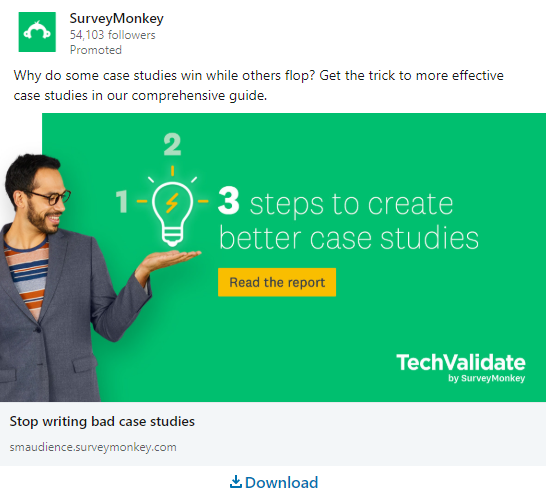
Here is a complete guide on how to use content marketing for SaaS businesses.
2. Design and develop a Landing page funnel
How to structure the opt-in flow for LinkedIn leads
- Lead Ad Form vs. Landing Page
Lead Ad Forms:
Less expensive, the user remains on LinkedIn then receives the content via email/link.
Landing page:
More expensive but better quality leads because it requires more effort from the prospect to fill out the form.
Example of a Landing Page
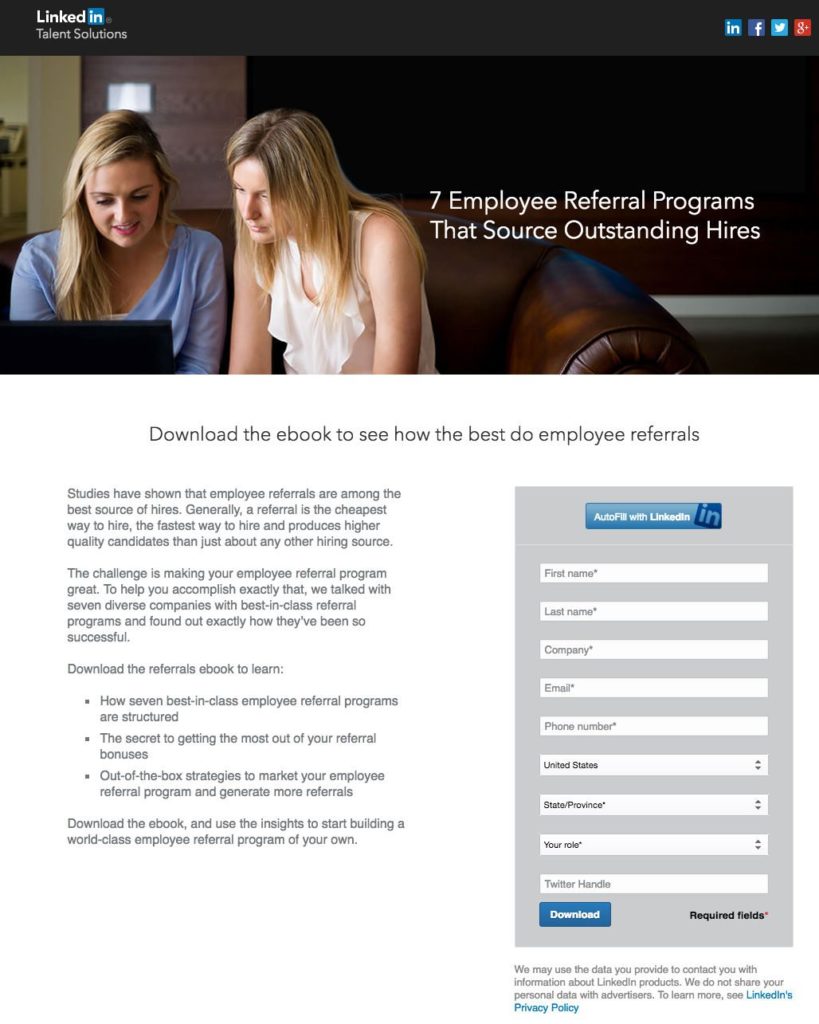
Split test both options and test what works best for you.
Thank You Page
The approach varies depending on the offering (demo or a free trial).
Trial: Include the offer on the thank you page.
Demo:
Option 1
A thank you page that offers visitors sign up for a demo and explain how it addresses their pain points. Include an explanatory video along with some copy if available.
Example
Option 2
Display a pre-recorded demo video on the thank you page. It is best for low conversion rates of demo signups.
Once you’ve developed your landing page funnel, you can move on to follow up email automation.
3. Nurture leads with follow up email automation
Not every click on a LinkedIn ad will immediately convert. Once the lead has opted in, you should work on nurturing it further through email. Consider setting up the first email to be sent after an hour of the resource delivery email or the following day.
Avoid hard sales and focus on automating a natural sales process instead.
We suggest asking questions about their business to open up a communication channel like you would in any sales conversation.
Examples
- What types of businesses do you work with?
- How many stores do you manage?
- How many salespeople do you have in your showroom?
The prospects who respond become your leads!
By now, you have your content, you’ve set up your landing page funnel and email automation, and you’re ready for targeting.
4. Set up your targeting approach
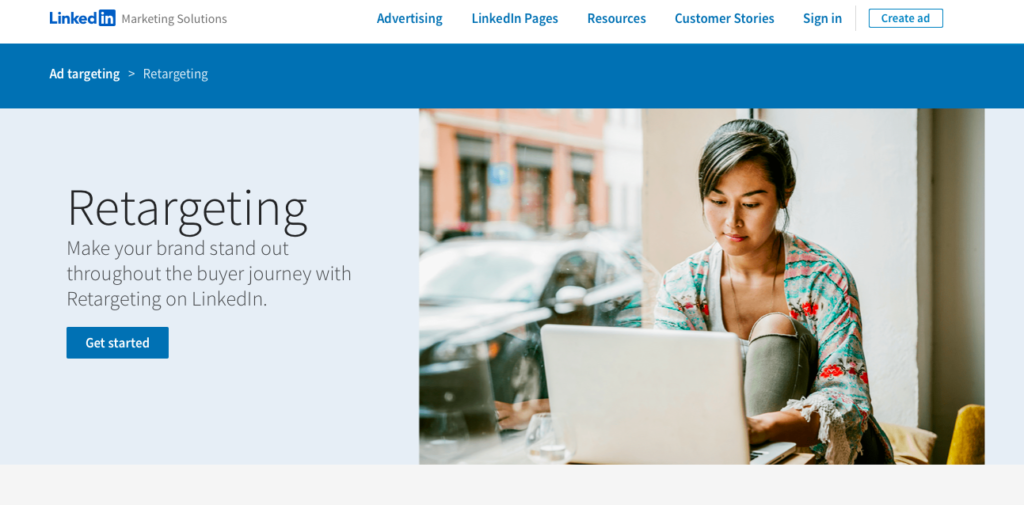
Choosing the right LinkedIn Ad type for your SaaS company depends on which kind of targeting you want to use.
3 targeting approaches:
- Warm traffic targeting
- Cold traffic targeting
- Account-based marketing targeting
Warm traffic targeting
Warm traffic is when you target users who have already been exposed to your brand but didn’t convert.
First, you’ll need to have the LinkedIn Insight Tag added to any page you want to track on your website. Then, use LinkedIn’s Website Retargeting functionality to build your campaign around your high-impact pages. Avoid targeting users who visited your home page. That’s too generic.
Examples of few high-intent pages you may want to test:
- Pricing page
- Contact page
- Sign up landing page for your demo or free trial
- Internal pages in case of a multi-step signup flow.
- Landing pages for any gated content
- Comparison pages of your company vs. competitors
As per LinkedIn: “A good rule of thumb when starting is to keep the target audience over 50,000 for Sponsored Content and Text Ads, and over 15,000 for Message Ads.”
Cold traffic targeting
Cold traffic targeting is marketing to LinkedIn users who have never heard of your company before.
You can use several different user facets, but we’ve always seen the best results from targeting by Job Title.
Don’t waste your time on group members. They are either students trying to launch their careers or salespeople trying to gain market insights.
Account-Based marketing targeting
Account-based marketing involves going after specific prospects that you’ve previously identified as good candidates for your product.
If you still don’t have target accounts, consider using Datanyze or Nerdy Data sites to search for your competitors’ customers.
Then, you can use LinkedIn’s Account Targeting feature to target them.
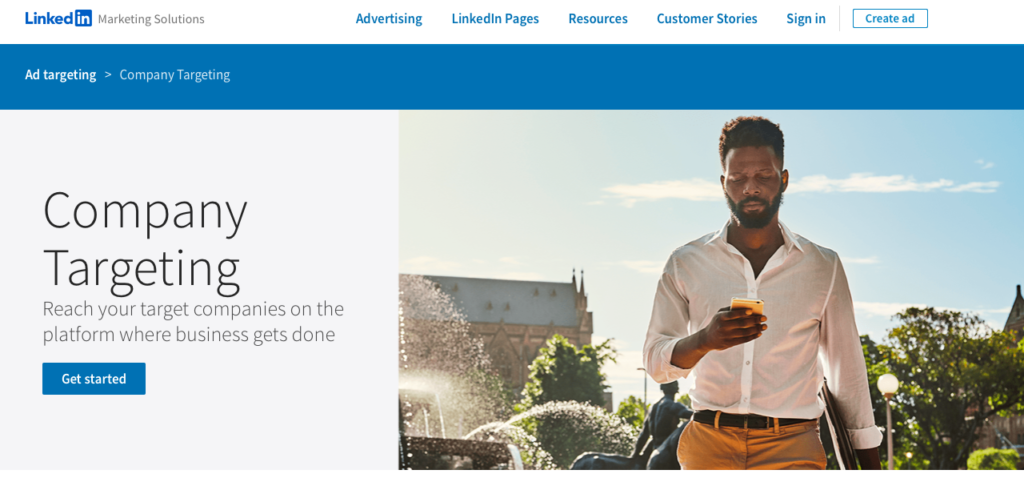
5. Setting your LinkedIn Ads campaign budget
Another decision you’ll need to make in this process is how you’ll allocate your budget.
If you’re familiar with advertising on Facebook or Google Ads, LinkedIn’s platform should feel intuitive.
- Set the total budget (typically by day)
- Set the dates your campaign will run
- Select the bid type
When you’re ready to set your budget, it is best to focus on a long-term strategy. LinkedIn recommends testing with at least $100/day or $5,000 in total. But this budget can be a bit high for a SaaS. Aiming for $200/week is a good start.
For competitive goals, you will want to set a bid higher than the suggested one.
Use the Maximum CPC Bid for more control over the amount you bid. However, if you trust LinkedIn to work in your best interests, then select Automated Bid. Whatever bid type you choose, make sure to plan it accordingly as LinkedIn can spend up to 120% of your daily budget.
For running multiple ads or campaigns, LinkedIn recommends two approaches to allocate your budget:
- 70/30 split of BOFU and TOFU ads
- 50/50 split of BOFU and TOFU ads
6. Monitor and analyze your ads performance
If your campaign’s goal is to gather views and interest, you should monitor clicks, impressions, click-through rates, and average engagement. But if your goal is to drive leads, then monitor conversion rates and their costs. You can check our 5 tips on how to increase your conversion rate.
Other things to monitor:
- Is the CPA within the target?
- Which campaigns are the top performers?
- Are we targeting users in the right industry?
Conclusion
If you’re marketing for a B2B SaaS company, LinkedIn is the place to be. Don’t miss out on this opportunity. It can be a primary channel driver for clients. Remember, practice makes perfect, so keep testing and trying!
If LinkedIn ads haven’t worked for you in the past, we hope the above processes will guide you to give it another shot.
About the author
My name is Manno. I’m the CEO and co-founder of Think Orion. My passion in life is helping other people and businesses achieve their wildest dreams. I love to solve problems, and luckily for me, I have the opportunity to do this daily.
Orion is a launchpad for unique brands and amazingly talented people. We help SaaS businesses from linear to exponential growth and love to write about this as well. This article is an example of that. I hope you enjoyed it.
